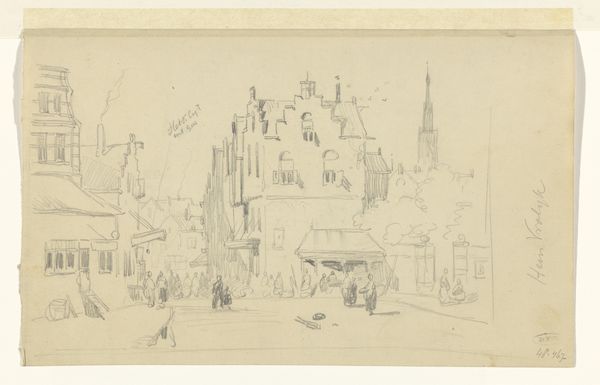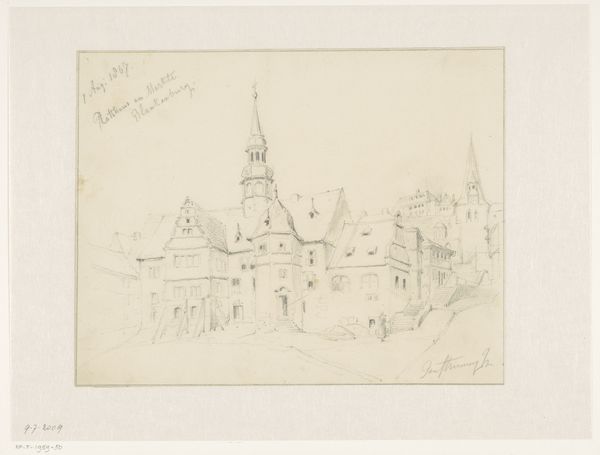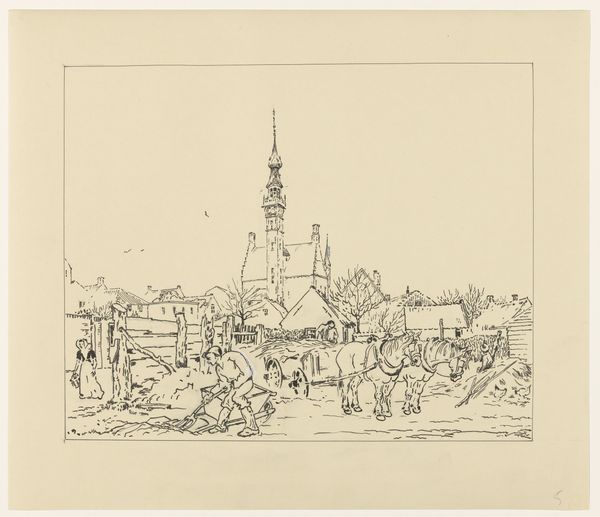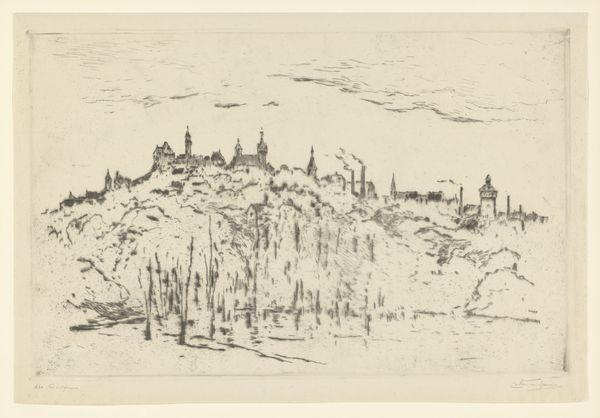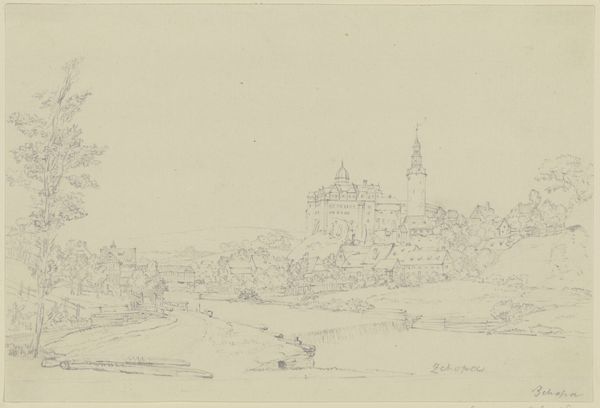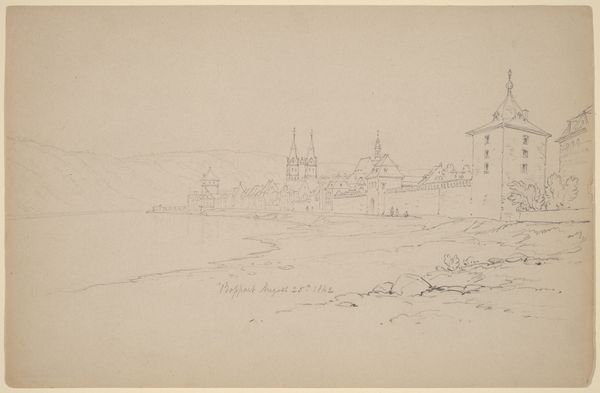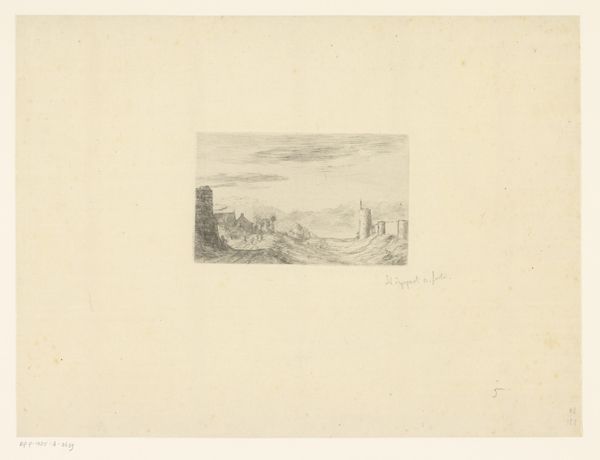
print, etching
#
16_19th-century
# print
#
impressionism
#
etching
#
landscape
#
cityscape
#
realism
Dimensions: height 116 mm, width 158 mm
Copyright: Rijks Museum: Open Domain
Curator: Let’s take a closer look at "Gezicht op Brugge in de sneeuw," or "View of Bruges in the Snow," an etching by Auguste Danse, created in 1885. It's currently housed here at the Rijksmuseum. What strikes you first? Editor: A certain stillness. A hushed quality settles over the architecture of Bruges. The delicate lines almost dissolve in the snow-dusted scene, lending an ethereal quality to the old buildings. It speaks to the quiet beauty of a winter day. Curator: Indeed. Danse captured Bruges during a period when printmaking was gaining momentum, finding expression in cityscapes. Consider how the rise of industrialization and urbanization influenced artists to capture the changing face of European cities. This particular work reveals the artist's interest in rendering atmospheric effects. Editor: Right, and beyond its technical skill, I’m also pondering what it might have meant to depict a city cloaked in white during that period. Was it simply about aesthetics, or were there underlying societal meanings? How did class play into this experience of Bruges in the snow, and how did this etching give perspective to different social classes? Curator: It's fascinating to consider class, definitely. Snow, especially in the 19th century, impacted travel and access to resources disproportionately, and as an artistic choice the effect could have intended different significances for viewers then. Editor: I agree. The tower looming over the city feels significant as well. Is it a symbol of power, of the enduring nature of institutions? Or, considering it within the context of its time, is it maybe indicative of the impact of industry, shadowing the citizens. Curator: That interplay of fragility and strength is compelling. As we consider the scene and social issues it might bring to the surface, it becomes clear that what was captured went well beyond just how to artistically render buildings in snow. It evokes many sentiments for the contemporary viewer. Editor: It truly does. Ultimately, this etching is not just a record of a place; it's a poignant reflection on a moment, society, and how those experiences shape our sense of place.
Comments
No comments
Be the first to comment and join the conversation on the ultimate creative platform.
